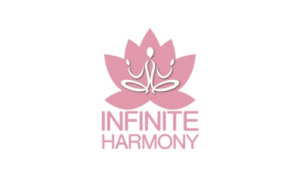I am a qualified Yoga Therapist, following the successful completion of a postgraduate Yoga Therapy diploma with Real Yoga.
Yoga therapy has lots of definitions but the one that resonates most with me is from the Minded Institute: “yoga therapy is the application of yoga practices to alleviate physical and mental health conditions with the view of promoting self-care and encouraging overall well-being.”
Yoga therapy is now recognised by doctors and is part of the ‘social prescribing’ approach within the NHS that helps individuals to be part of their own healing process.
Yoga therapy really is for everyone – you don’t need to be able to get down on the floor. The sessions are highly focused on your needs and apply the therapeutic principles of yoga, movement, breathing techniques and mindfulness/meditation.
Yoga therapy is a holistic approach that utilizes the principles and practices of yoga to address specific physical, mental, and emotional needs. Unlike general yoga classes, which often focus on physical fitness and flexibility, yoga therapy is tailored to the individual and aims to promote overall well-being and manage specific health conditions.
Discover the Healing Power of Yoga Therapy - current
Key Components of Yoga Therapy
1. Personalised Practice
Yoga therapy involves a personalised approach where a certified yoga therapist assesses the individual’s health concerns, medical history, and personal goals. Based on this assessment, the therapist designs a customized yoga practice that may include:
- Physical postures (asanas): These are tailored to address specific physical issues, such as back pain or musculoskeletal problems.
- Breathing exercises (pranayama): Techniques to improve respiratory function and reduce stress.
- Meditation and mindfulness: Practices to enhance mental clarity and emotional stability.
- Relaxation techniques: Methods to promote deep relaxation and stress relief
2. Holistic Health Benefits
Yoga therapy is used to treat a wide range of physical and mental health conditions, including:
- Physical conditions: Back pain, heart disease, asthma, chronic fatigue, hypertension, multiple sclerosis, and side effects of chemotherapy.
- Mental health conditions: Depression, anxiety, PTSD, schizophrenia, and substance abuse issues
3. Integration with Medical Treatment
Yoga therapy is often used as a complementary treatment alongside conventional medical care. It aims to empower individuals to take an active role in their health and well-being, promoting self-care and lifestyle changes that support overall health
History and Development
Yoga therapy has its roots in the ancient practice of yoga, which originated in India thousands of years ago. The modern field of yoga therapy began to take shape in the 1980s, notably with Dr. Dean Ornish’s study on reversing heart disease through a comprehensive lifestyle program that included yoga. This marked the beginning of the medical community’s acceptance of yoga as a therapeutic tool
What to Expect in a Yoga Therapy Session
A typical yoga therapy session involves:
- Initial Assessment: The therapist conducts a thorough assessment to understand the individual’s health concerns and goals.
- Customized Practice Plan: Based on the assessment, the therapist designs a personalised yoga practice.
- Guided Practice: The therapist guides the individual through the practice, which may include physical postures, breathing exercises, meditation, and relaxation techniques.
- Home Practice: The therapist provides instructions for a home practice to support ongoing progress and self-care
Conclusion
Yoga therapy is a versatile and effective approach to improving health and well-being. By integrating the physical, mental, and emotional aspects of health, it offers a comprehensive method for managing a variety of health conditions and enhancing overall quality of life.
References:
Cleveland Clinic
GoodTherapy
YogaTherapy.Health
The Minded Institute

